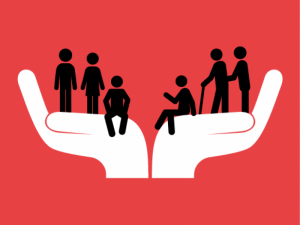The ‘E’ of MIGRAINE is to do with context. It refers to economics, politics and the social aspects of a media product. When analysing one, it is important to think about what time period it refers to (for a film this would be when it is set), when it was made and how this might have influenced certain choices. Economics are quite simply money and wealth, social aspects are what is happening in the society or any links to culture, and the political side of things is about who is the one in control (government or other leadership). All of these factors, both in terms of the piece of media and the world at the time it was created, make up its context and help us understand the situations and characters far better.



The following are copied and pasted from the PowerPoint for my personal use. These are prompts for topics to analyse within a piece of media and I will be referencing them as a guide when doing my research for the FMP.
Economic
✎ Economic classes and issues explored within a film’s narrative:
Does the film appear to criticize the socioeconomic status quo? In what ways and what aspects?
✎ The economic message or point-of-view of the filmmaker:
Is nearly everything of value in this movie something that can be bought or sold? Or does the film portray values that fall outside the realm of economics?
✎ The economic influence or impact caused by a film or the film’s production methods:
Was there any aspect of the film’s production which had a broader economic impact? (e.g. a pioneering use of a new film element, such as digital special effects, which created a whole new market of jobs…this links to institutional contexts as well)
Political
✎ A film that attempts to persuade, subvert or create a political effect:
Does the film seem to have any particular political agenda? Does its story support or reject any political viewpoints, groups or perspectives?
Do the characters show any specific political views within the film, either through words or actions? Is this explicit or implied?
✎ A film that has caused or incited political events or effects:
If the film portrays a political movement or event, does it highlight a majority or minority point of view?
Does the film support a widely accepted version of political events or subvert them?
✎ A film that directly addresses a political issue or concern:
Are various political groups represented in different cinematic ways in the film?
Does the film comment on any particular laws, policies or political mindsets of the country in which is it set and/or produced? Is this positive or negative?
Social
✎ The communities, identities or issues represented in a film:
Communities can include immigrant, religious or language-related groups. Identities can include gender or sexual identification or ways of life. Issues are social dilemmas that evoke opinions and force people to take sides.
✎ The social values, conventions and traditions represented in a film:
How does the film incorporate one or more of the social aspects described above? What narrative role do specific communities, identities or issues play in the film and your sequence?
✎ Use of the film by particular communities, identities or groups:
Are there conflicts between characters over social values, conventions and traditions in the film?
✎ The period in time in which a film was created
✎ The era or cultural movement depicted in the film
✎ The events or notable historical figures depicted in the film:
Given what you know about the place or time portrayed in the movie, are there groups of people not shown or barely acknowledged in the movie who are nonetheless significant in the geographic location the film is set within? Why do you think they are not portrayed in this movie?
